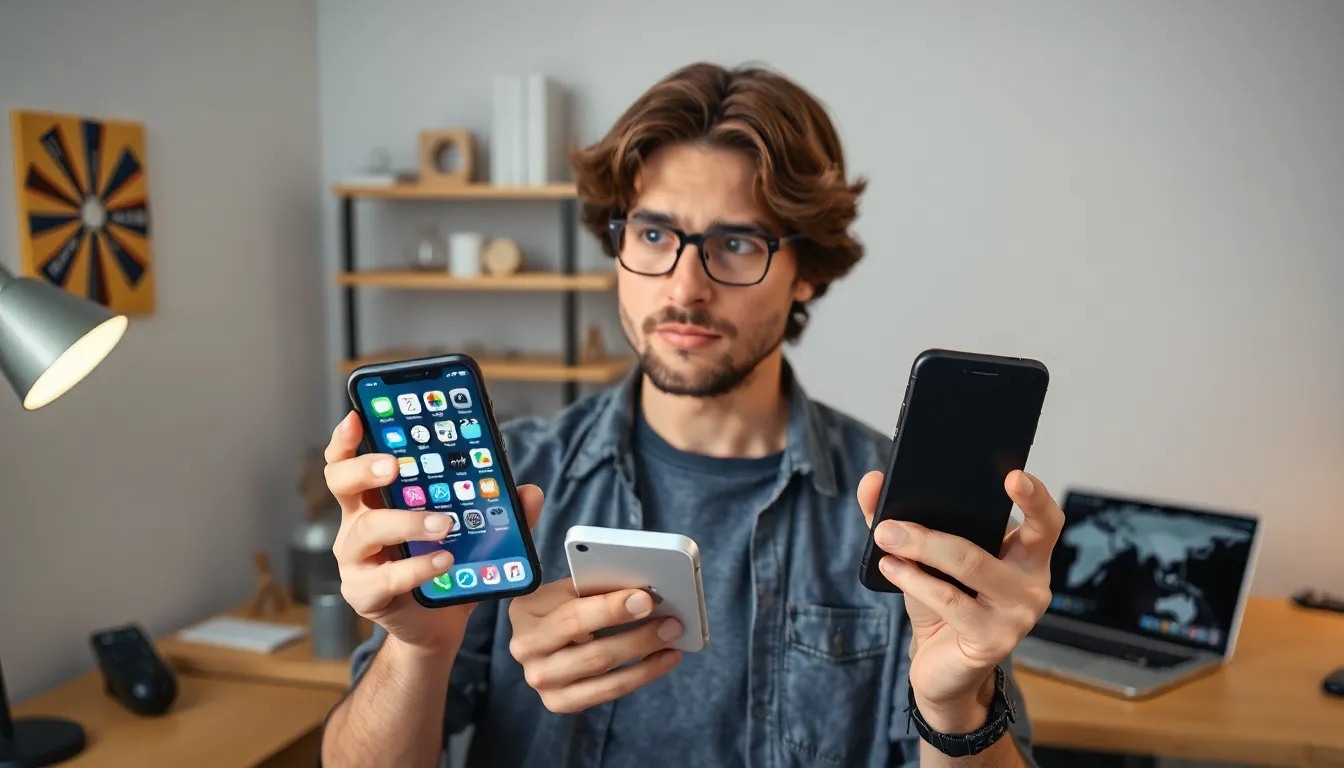Switching to a new iPhone is like unwrapping a shiny gift, but what happens to all those apps that brought joy to your old device? Fear not! Transferring apps from one iPhone to another isn’t just possible; it’s as easy as stealing fries from a friend—except this time, it’s completely legal!
Whether you’ve upgraded for the latest features or just want to avoid the dreaded “app-less” life, transferring your apps can feel daunting. But with a few simple steps, you’ll have your favorite games and productivity tools back in no time. So grab your new iPhone and get ready to dive into a world of seamless app transfers, because who wants to start from scratch?
Table of Contents
ToggleUnderstanding iPhone App Transfers
Transferring apps between iPhones simplifies the transition to a new device. Users maintain access to essential applications, ensuring a seamless experience.
The Importance of App Transfers
App transfers represent a critical element in maintaining functionality across devices. Users often rely on specific applications for daily tasks. Retaining these apps reduces frustration and enhances productivity during the transition phase. Many paid apps link to user accounts, making transfers essential for preserving investment. Ensuring favorite games and utilities remain accessible often impacts overall satisfaction with the new device.
Common Reasons for Transferring Apps
Common motivations for transferring apps include upgrading to a newer model and replacing a damaged device. Users seeking to maintain continuity in communication often prioritize transferring messaging and social media applications. Work-related tools also rank highly on the list, as professionals require access to productivity software. Additionally, many people want to keep personal finance apps, ensuring their financial management remains uninterrupted. Ultimately, a smooth transfer process safeguards access to essential functions that users depend on daily.
Methods to Transfer Apps

Several methods exist for transferring apps from one iPhone to another. These approaches ensure a seamless transition and easy access to essential applications.
Using iCloud Backup
iCloud Backup simplifies the app transfer process. Users back up their old iPhone to iCloud, storing apps and data securely. To start, ensure that iCloud Backup is enabled on the old device. Once the backup completes, set up the new iPhone and choose the option to restore from the iCloud backup during the initial setup. After the restoration, all apps download automatically onto the new device, retaining user preferences and settings.
Using iTunes or Finder
iTunes or Finder provides an alternative method for app transfer. Users connect the old iPhone to a computer using a USB cable. Once connected, the device appears in iTunes or Finder. Selecting the device allows starting a backup process, saving apps and data to the computer. After completing the backup, connect the new iPhone and select the restore option. The transfer begins, bringing all apps and previous settings to the new device.
Using Quick Start Feature
Quick Start offers a quick way to set up a new iPhone. During the setup process, users place the old iPhone next to the new one to initiate transfer options. An animation appears on the new device, prompting users to scan it with the old iPhone. After verification, data, including apps, transfers wirelessly. This method allows users to customize settings and connect to Wi-Fi during the process.
Troubleshooting Common Issues
Transferring apps may present various challenges. Identifying these issues early can help streamline the process.
App Compatibility Problems
App compatibility often arises when transferring between different iOS versions. Some apps may not support the latest iOS, resulting in installation failures. Check the App Store for updates prior to transfer. It’s wise to verify that the desired apps function on both old and new devices. Older devices might run outdated software, conflicting with newer app requirements. Users should look for compatible versions or alternatives if issues arise, which ensures access to essential applications.
Transfer Failures and Solutions
Transfer failures can occur due to various reasons. Network connectivity issues frequently disrupt the transfer process, so ensuring a stable Wi-Fi connection is vital. Restarting both devices may resolve minor glitches. Utilizing iCloud or iTunes successfully might require an updated version of the software, which can be checked in the settings. Users facing persistent problems should consider resetting network settings on the old device. If these solutions prove ineffective, consulting Apple Support provides additional guidance and assistance.
Tips for a Smooth Transfer Experience
To ensure a smooth transfer experience, back up the old iPhone first. Use iCloud Backup or iTunes, depending on user preference. Creating a complete backup protects data and applications.
Maintain a strong Wi-Fi connection while transferring. Reliable internet access significantly reduces the likelihood of transfer interruptions. Restarting the Wi-Fi router may help if connection issues arise.
Check for app updates before the transfer. Updated apps often function better on newer iOS versions. Users can find these updates in the App Store.
Ensure both devices are charged. Low battery levels can disrupt the transfer process. Keeping both devices plugged in makes for a seamless experience.
Utilize the Quick Start feature for convenience. Placing the old iPhone next to the new one simplifies the setup process. Users can follow on-screen instructions to expedite app transfers.
Familiarize with app compatibility concerns specific to different iOS versions. Some apps may require updates or might not support older models. Always verify compatibility to avoid potential issues post-transfer.
Seek assistance if challenges persist. Apple Support can provide additional resources and troubleshooting tips. They often help resolve unique problems that users encounter during transfers.
Consider transferring data selectively if desired. Users don’t need to move every app; instead, focus on essential applications. This approach minimizes clutter on the new device and enhances efficiency.
Transferring apps from one iPhone to another is a straightforward process that ensures users can keep their favorite applications intact. By utilizing methods like iCloud Backup, iTunes, or the Quick Start feature, users can seamlessly transition to their new device without losing access to essential tools.
With a few simple steps and some preparation, anyone can enjoy their apps on their new iPhone. This not only enhances productivity but also maintains the continuity of communication and entertainment. Embracing these transfer methods makes upgrading or replacing devices a hassle-free experience.




